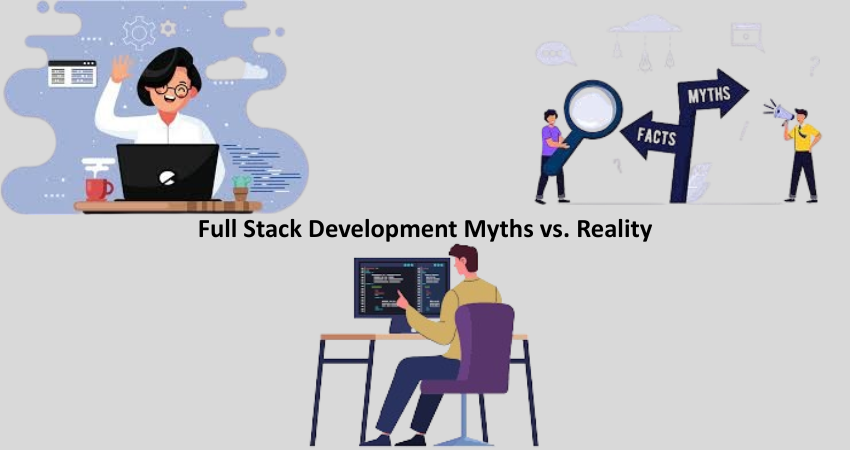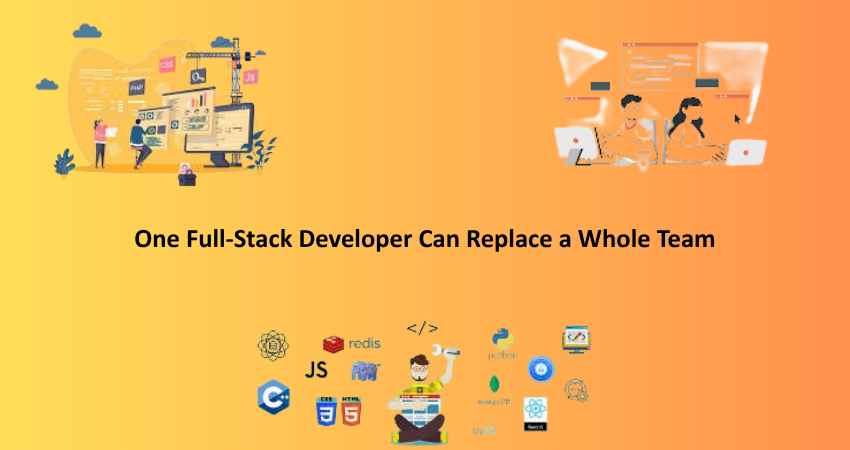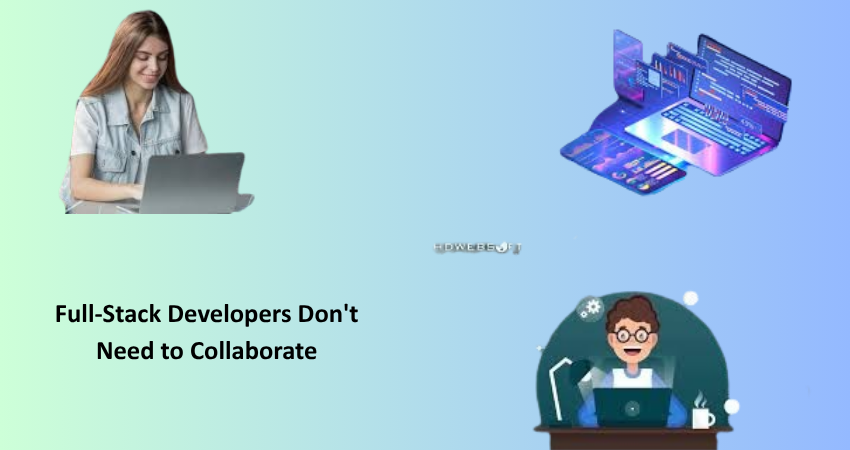
Introduction
Full-stack development has become the backbone of modern software engineering, with claims for its much-needed versatility and problem-solving. With the fast-moving developments that technology companies crave, the role of a developer who knows how to tackle front-end and back-end work is really in demand. Because of the constant misunderstandings about full-stack developer roles, many myths and unrealistic expectations have arisen. Commonly, they are perceived to be tech wizards who build entire systems all by themselves, and others sometimes dub them as “masters of none.” Labels such as these remain to obscure what the true profession is about.
Therefore, in this article, we want to clear up the air by discussing all common myths about full-stack development versus the realities that these professionals actually experience. This juxtaposition is going to be of utmost importance to both aspiring developers, who may find unwarranted hopes regarding their future role, and their employers, who may be measuring their own expectations rather too far against the actual prospects. If expectations are clarified, there will be better planning, hiring, and ultimately, better software.
Myth #1: Full-Stack Developers Are Experts in Everything
The Myth
Some users are saying that full-stack developers are masters of every technology stack and every language and framework. The myth is based on the misconception that a full-stack developer must be able to work independently with not only front-end but also back-end techsDBs, DevOps, UI/UX, mobile development, and quite possibly issues in cybersecurity. Whereas in truth, yes, a full-stack developer has a range of technology knowledge, to expect that mastery of all is just unrealistic.
Full-stack development is not so much about an in-depth understanding of how every single component of the system works as about comprehending how all parts of the system fit together. For example, a developer can be adept at using React, Node.js, and MongoDB. That doesn’t mean he/she specializes in performance optimization or cryptographic algorithms. The tech landscape is vast and ever-changing, and it would be practically impossible for one person to remain updated with every niche. This myth has resulted in extensive stretching of responsibilities with some disappointment at times when the developer fails to live up to superhuman expectations.
The Reality
A true full-stack developer is a generalist; they have a wide working knowledge of the stack but specialize in one or possibly two areas. They would serve as the glue that binds together different parts of the software system so that front-end elements communicate well to back-end servers and databases. They are flexible in moving between tasks, troubleshooting across domains, and pitching in where help is needed, especially in smaller teams that require a lot of flexibility.
The best are the full-stack developers who go for specialists when appropriate. For example, they might deal with the basic aspects of a database schema but will not shy away from bringing in a DBA for performance tuning. Such collaboration makes for better, more secure, and maintainable applications. Instead of hunting for mythical experts in all domains, companies should appreciate full-stack developers for their holistic view that helps bridge the chasm between various disciplines.
Myth #2: One Full-Stack Developer Can Replace a Whole Team

The Myth
It’s also a misconception that one can get away with relying entirely on a full-stack developer to perform all functions that an entire development team typically would. This is most especially common among startups or organizations with budget constraints, hoping to cut costs by employing one person to do the job. The thinking is that this person specializes in both front-end and back-end development, so he should be able to single-handedly move an entire project from concept to deployment.
For sure, it can be done with just one developer for smaller applications, but when it comes to such large-scale, enterprise applications, it really busts the myth. It requires much more than writing code to create a profitable product-it will need UI/UX design, QA, project management, deployment of infrastructure, and customer support. One can fail by expecting someone to fulfill all these roles, and to do so well; burnout and the quality of the final product can suffer due to this misconception.
The Reality
In real life, full-stack developers work best in collaborative teams. Their cross-domain insight is a very good fit for techno-functional roles like tech lead or product engineers, who can sense how the different parts of the system interact. They are vital for identifying bottlenecks, translating back and forth between front-end teams and back-end teams, and building quick prototypes.
But when it comes to heavy lifting, specialization is key for complex applications. Setting up a CI/CD pipeline will be done faster by a DevOps engineer than by a generalist. A UX designer will provide far better interfaces. The full-stack developer and specialization combo yields synergy for better software. Organizations must view full-stack developers not as one-man armies but as tacticians within a holistic development team.
Myth #3: Full-Stack Developers Are “Jack of All Trades, Master of None”
The Myth
Critics often deride full-stack developers as superficial, arguing that they do not have the specialty-level skills required to tackle some of the most complicated problems. The stereotype claims that their breadth of skill deprives them of depth, making them inferior to specialized counterparts. This myth may even discourage cabable developers from going the full-stack route as they fear that it would leave their end-valued expertise by others lower in the pecking order.
That’s the point of the complete phrase – “jack-of-all-trades, master-of-none; bu oftentimes better than master of one.” The versatility is quite strong in this; in the busy and competitive environment, this would make a more important adaptability trait. Although some full-stack developers are not specialized, most of them intend to keep the broad while having some very deep knowledge in one or two areas.
The Reality
Many full-stack developers, such as those deeply experienced in specific fields of work,” do exist. Although it is not uncommon for them to be those who are front-end focused with great UX intuition, others may favor back-end heavy environments where they have strong database and server management skills. The difference lies in their ability to contextualize their issue within the wider application architecture. This broader view serves crucial roles when trying to pinpoint integration problems, optimize user flows, or even ensure features are working together throughout the stack.
Furthermore, being a jack-of-all-trades does not mean that one cannot master anything. A good many full-stack developers start off as specialists and broaden their knowledge frames through hands-on development experience. Thus their broad view often enables them to make the best possible development decisions and communicate well across teams. Full-stack developers should not be seen as second-class citizens but rather appreciated for their versatility and strategic importance in highly complex development situations.
Myth #4: Full-Stack Development Is Only for Startups
The Myth
The theory goes that full-stack developers have their place only in startup settings; the paradigm rests upon a startup culture that is resource-driven and favors versatile team players able to wear numerous hats. Hence, a full-stack developer is often psychologically molded into the image of an MVP-working, early-stage product.
Since the full-stack developer has many areas of responsibility, he is better suited to working in a startup. However, this does not mean that they are useful only to an organization of that size. Across large enterprises, government agencies, and technology giants, full-stack developers fit into a variety of roles. Reducing them to this role in a startup culture ignores the applicability and strategic importance of their skill set across a variety of organizational sizes and types.
The Reality
A full-stack developer is a defining feature in an organization at every level. In larger organizations, a full-stack developer acts more as an integrator—one who will have different parts of the system communicate within itself. Their cross-disciplinary knowledge makes them a perfect fit for technical product managers, solution architects, and senior developers who serve as liaisons between departments. Thereby alleviating the paralysis of communication silos, long hand-off delays and development streamlining.
In fact, enterprise projects usually have their modules regarding front-end and back-end comprehension. A full-stack developer completely owns all the modules end-to-end. This presence in larger teams brings about agility, a shorter debugging process, and integration across many systems. Whereas start-ups would require full-stack developers just to keep their heads above water, full-blown organizations would have at least seen roles fulfilled for optimization and innovation.
Myth #5: Full-Stack Developers Don’t Need to Collaborate

The Myth
It is a stereotype that full-stack developer works best and perfect when working with himself, able to handle every aspect of development without external input. This hearsay transforms a full-stack into a lone wolf capable of building an entire system alone, thus rendering collaboration redundant. Some companies also fall into the trap by hiring these developers with the expectation that such developers take the place of cross-functional teams, thus making communication and project management a simple endeavor.
The isolated belief makes the developers deny the verification of distinct perspectives and domain-specific knowledge for the projects. It creates conditions for unrealistic expectations and also sets in serious bottlenecks when either unavailable or overwhelmed the individual developer. No matter how good or knowledgeable a developer might be, it’s unhealthy and damaging to presume the developer can do it all by themselves because it hampers the workflow and has potentially damaging effects on the quality of the ultimate product.
The Reality
In short, successful full-stack development comes down to collaboration. When it comes to working with designers, or perhaps QA testers, or getting input from their pals in security, it is the full-stack developers who thrive. This cross-functional knowledge allows a full-stack developer to effectively communicate and act as a nexus between specialized teams, propagating the same message in layman’s terms for the two or more disciplines involved.
Collaboration also helps full-stack developers to keep learning and adjusting themselves, which is vital in an industry that keeps evolving. Regarding collaboration, instead of being seen as a weakness or a form of redundancy, it is actually a core strength of full-stack development. The best results arise when full-stack developers are incorporated in a synergistic team, where each member can bring their unique strengths to bear on the collective goals.
Conclusion
Full-stack development will always be one important and progressive branch of software. There still exist myths that surround the various capabilities related to full-stack developers and their functions. Reality, however, is much richer and has far greater implications. This aspect embraces the very flexible, holistic-authentic viewpoint that is essential for the fast-moving tech environment. Be it in a lean startup or a sprawling enterprise, full-stack developers fill the gap between domains, streamline communication, and contribute significantly to the success of software projects.
Knowing the myths and realities can contribute to healthier hiring decisions, achievable job expectations, and excellent work environments. It is time to try and strike a balance in appreciating the strategic value offered by full-stack developers instead of pigeonholing them into exaggerated stereotyping. This special blend of breadth and, often quite literally, depth in the field empowers full-stack professionals with such agility and insight into navigating all the complexities of modern software development.